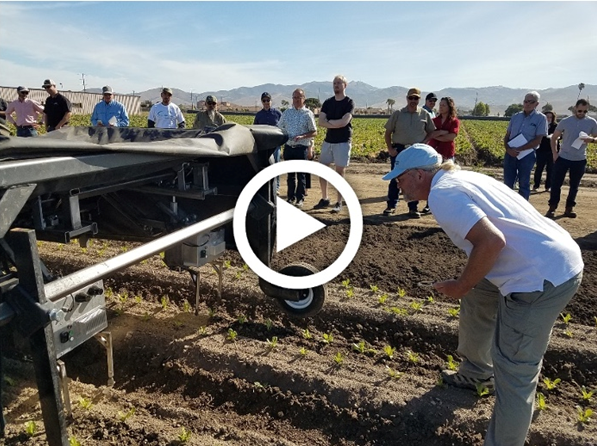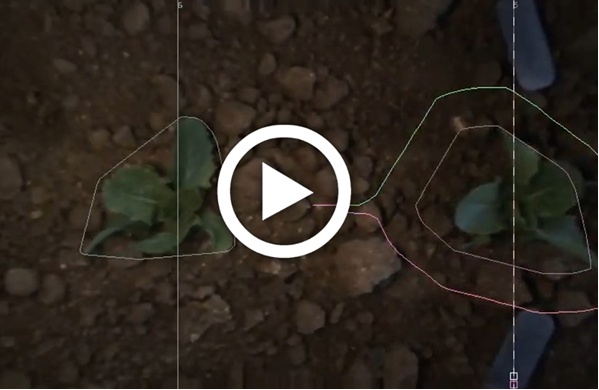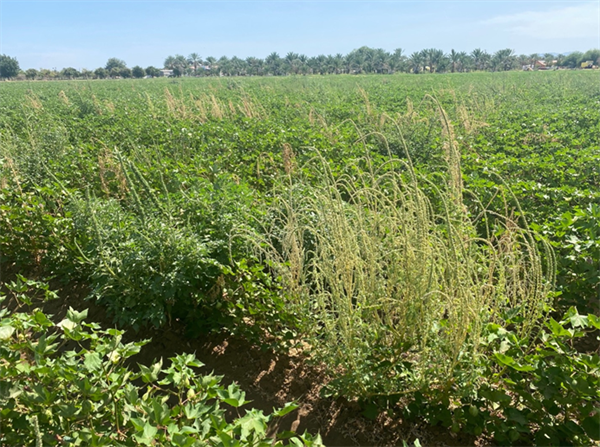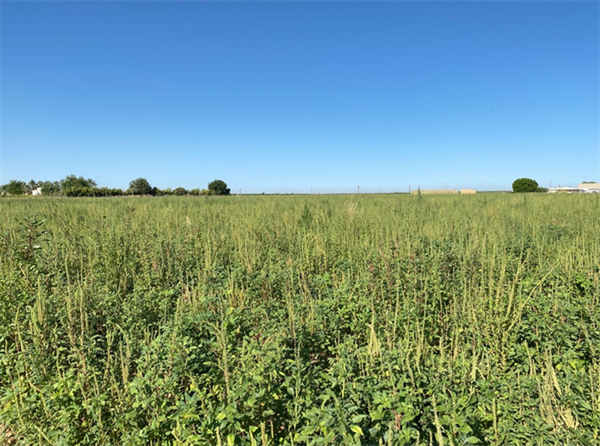Jul 27, 2022
Leaching and Internal Drainage
The management of salt and sodium (Na) concentrations in agricultural soils is a constant challenge in desert crop production systems. The failure to manage salinity and sodicity has contributed to the demise of many agricultural systems and civilizations over the course of human history, particularly in arid and semi-arid regions (Adams and Hughes, 1990 and Gelburd, 1985). For example, the Hohokam civilization flourished in the Salt, Gila, and Verde River Valleys of what is now Arizona during the millennium current era (CE) 450-1450 CE but their civilization collapsed and dispersed. Based upon all available evidence, archeologists believe that drought and salinization of their agricultural soils contributed significantly to the collapse of this civilization (Fish and Fish, 2002; Short, 2019).
In the 29 June 2022 edition of the University of Arizona Vegetable Integrated Pest Management Newsletter, Volume 13, No. 12, I posted an article “Reclamation of Saline and Sodic Soils”, describing saline and sodic soils and reclamation requirements. In all cases associated with saline and/or sodic soils, additional irrigation water to accomplish sufficient leaching of soluble salts is required above and beyond meeting crop consumptive use needs.
For sufficient leaching of soluble salts, the movement of soil-water down through the soil profile that carries the soluble salts below the crop root zone is required. Not all soils are created equal and not all soils will equally accommodate deep percolation and leaching. Therefore, one needs to evaluate soil conditions regarding the internal drainage capacity to manage fields for salinity balance and sodic soil amendment.
The foundation for good overall plant health is a healthy soil that supports high quality crops and good yields. Soils are considered “healthy” that have good soil tilth, aggregation, and structure, which is enhanced by organic matter and that leads to better soil aeration and water movement. Soil 'tilth' is a function of the aggregation of individual soil particles (e.g. sand, silt, and clay particles) that are bound together to form a soil aggregate. Soil structure is often described as the 'crumbliness' of the soil which is basically describing the degree of soil aggregation. Good soil structure enhances water retention, drainage, fertility, and aeration in the soil. Soils with high sodium concentrations will have dispersed soil particles, the opposite of aggregation, which causes soil crusting and problems with water infiltration and soil aeration. Thus, the improvement of basic soil health is important in dealing with issues such as compaction, lack of aeration, and poor drainage, each of which can contribute to problems associated with poor root growth, overall crop development, yield, and crop quality.
For leaching and percolation to take place, soils must be first brought to a level of full saturation. Additional water applied to the soil at saturation can then provide sufficient physical forces to accomplish percolation and leaching. Plant roots do not generally do well under saturated soil conditions and will suffer in an anaerobic environment. Thus, drainage is critical to maintain plant-available water levels in the soil and provide good aeration in the root zone.
The most common limitations to internal soil drainage include fine textured soils (high clay content), compaction, caliche layers (consolidated calcium carbonate, CaCO3), a high-water table, or stratified soils with course textured layers (horizons) beneath finer textured layers. In the alluvial soils commonly associated with crop production areas of Arizona and the desert Southwest it is not uncommon to find any of these soil conditions.
The alluvial soils in Arizona can vary tremendously in both the horizontal and vertical dimensions. There are basically two ways to find out what exists in a field in terms of basic soil profile conditions. The first would be to augur down into the soil in a field and evaluate soil texture and horizon organization vertically by depth. By doing this in several locations in a field one can better determine both soil variability by depth and the field’s variability in a horizontal dimension. Secondly, one can review soil maps from the USDA – Natural Resource Conservation Service (NRCS). In my experience working in agricultural fields across Arizona over the past 35 years, the NRCS maps do a very good job of delineating soil series across the landscape. The soil series descriptions are good references for general descriptions of soil horizon organization. This can vary to some extent, particularly in cases where a large amount of extensive land leveling has been done. Otherwise, the NRCS maps are a good reference. Nevertheless, the best method is to physically sample a soil and evaluate field variability across the field and by depth.
In general, soils with a clay content, greater than about 40% clay (Figure 1), should be carefully evaluated regarding natural limitations to internal soil drainage. In soils of these textures, drainage is possible, but it can be very slow. There are many fields, particularly in the Colorado River Valleys, that can have very slow internal slow drainage due to deep, fine textured soils. In some cases, subsoil drains for gravity or passive movement of water have been installed. Also, in some cases pumping systems with drainage wells have been installed in soils of these types to help facilitate internal drainage. These types of soils are also commonly sensitive to compaction issues, commonly from tillage operations.
High water tables can also exist due to basic geological and hydrological conditions such as proximity to a river or water stream. These situations also commonly need the development of either gravity drains or the development of a drainage well system to pump the high-water table out of the area. The soil profile example in Figure 2A provides an example of a soil that should have good internal drainage but with the existence of a high-water table that could severely limit the depth and capacity to fully leach and drain a soil profile of this nature. This is an example of a case in need of either a passive or active drainage system.
There are many good examples of drainage systems that have been developed in this region. In the Yuma area the irrigation districts managed by the Yuma County Water Users Association and Wellton-Mohawk Irrigation and Drainage District have developed systems of drainage wells that actively pump water out of the high-water table situations into the drainage canals for movement out of the valleys. In the past 30 years these districts have expanded the use of drainage wells and the internal drainage of many fields have been dramatically improved. The Imperial Valley of California is a good example of a large, irrigated area with tile drains that have been installed in many fields that are designed to facilitate movement of water out of the fields into the drainage canals by the force of gravity, or passively.
Soils with caliche layers can be encountered in many parts Arizona with crop production. In many cases the presence of a caliche layer in a soil profile will define the lower limit of the effective crop root zone. Fields of that type should be managed with an understanding of that limit in soil and rooting depth. Perching of water above a caliche layer can be a problem not only to drainage but to root development and the possibility of developing anoxic conditions in a saturated zone. Thus, irrigation management needs to be balanced with soil depth and drainage capacity in fields of this type, (Figure 2B).
The organization of soil horizons by depth can also affect the internal soil drainage capacity. When a distinct boundary between a finer textured soil horizon (e.g. clay, silty clay loam, clay loam, etc.) occurs with an underlying course soil horizon (e.g. fine or coarse sand) this boundary zone will serve as a “check valve” on the soil water percolation process. Thus, water can perch above the boundary until a sufficient hydraulic head is developed and water percolation will proceed. This can serve to slow the percolation process substantially, usually for a short period of time, but it can be enough to make leaching through that soil profile and root zone more difficult. Perching of water above a soil textural boundary layer can also create a zone of saturated soil and anoxic conditions. As a result, it is important to recognize the presence of these conditions when they exist in the field (Figure 2C and 2D).
All four examples of the soil profiles shown in Figure 2 exist in Arizona agricultural fields and with appropriate management, they can each be productive fields. Thus, it is important to evaluate soil conditions in the field and manage appropriately to maintain soil-plant water relations for the crop, good soil aeration, and manage the leaching of soluble salts for crop sustainability.
References:
Adams, WM, and F.M.R. Hughes. 1990. Irrigation development in desert environments. In: Goudi AS (ed) Techniques for desert reclamation. Wiley, New York, pp 135–160.
Fish, S.K. and P.R. Fish. 2002. The Hohokam Millennium. School for Advanced Research Press, Santa Fe, NM. p.1-11.
Gelburd, D.E. 1985. Managing salinity lessons from the past. J. Soil Water Conserv. 40(4):329–331.
Shahid, S.A., Zaman, M., Heng, L. 2018. Soil Salinity: Historical Perspectives and a World Overview of the Problem. In: Guideline for Salinity Assessment, Mitigation and Adaptation Using Nuclear and Related Techniques . Springer, Cham. https://doi.org/10.1007/978-3-319-96190-3_2
Short, H.L. 2019. Agricultural Soils and the Failure of a Prehistoric Population. J. Environ. Quality.48: 1652-1663.
Silvertooth, J.C. 2022. Reclamation of Saline and Sodic Soils. University of Arizona Vegetable Integrated Pest Management Newsletter, 29 June 2022, Volume 13, No. 12.
|
Country
|
Millions of Hectares
|
% of Irrigated Lands
|
|
India
|
20.0
|
36.0
|
|
China
|
7.0
|
15.0
|
|
United States
|
5.2
|
27.0
|
|
Pakistan
|
3.2
|
20.0
|
|
Soviet Union
|
2.5
|
12.0
|
|
Total
|
37.9
|
24.0
|
|
Global
|
60.2
|
24.0
|
Table 1. Soil salinity caused by irrigation in major irrigating countries and globally. From: Shahid, et al. 2018. Soil Salinity: Historical Perspectives and a World Overview of the Problem.
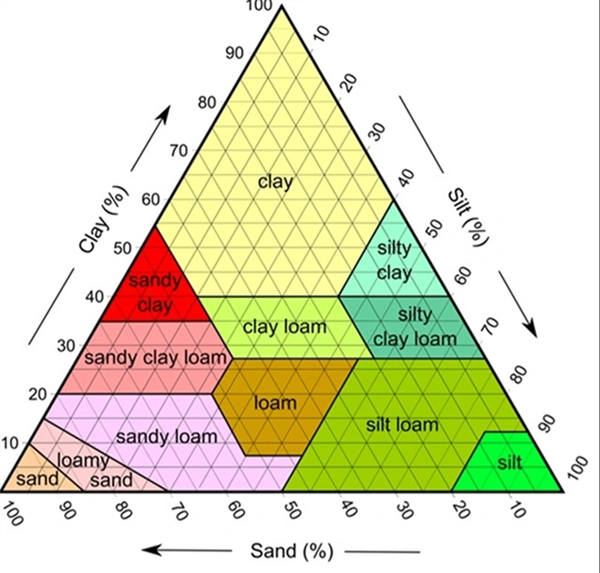
Figure 1. Soil textural triangle.
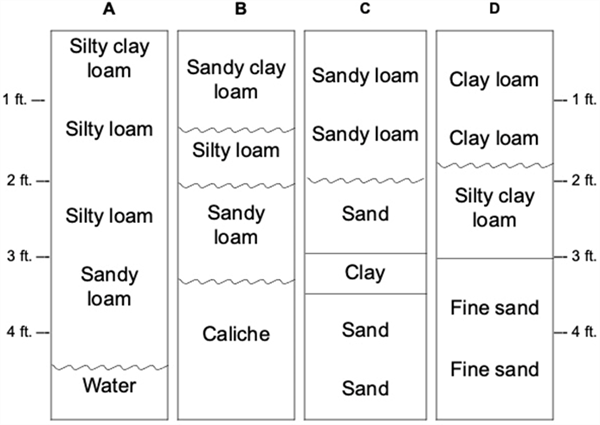
Figure 2. Examples of soil profiles and horizon organization by depth.








